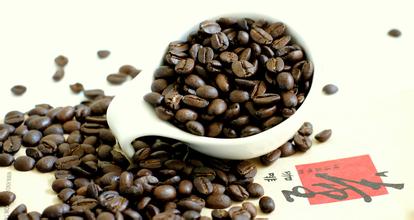Katim Coffee Taste and Flavor description method introduction of varieties in manor production area
Katim Coffee Taste and Flavor description method introduction of varieties in manor production area
Is an example of this absurd hypothesis. Traditionally, we would bring Arabica tin card to Binchuan Jugula as the starting point of Chinese coffee, but the real starting point of modern Chinese coffee industry is to grow Katim for Nestl é in order to earn foreign exchange. When the boutique coffee industry started, we only had small and medium-sized hybrids, and there was no large-scale planting of small seeds, so, we refer to Katim in Yunnan with the Luodou gene as "Yunnan small-grain coffee". In the 1970s, the coffee industry was affected by iron rust, and the global coffee industry encountered a cold winter, only for growers in Arabica and Robsta. Is just the beginning of spring. Because Robusta is a great invention, through the hybridization of medium and small seeds, Robusta can obtain the immunity of Luodou to iron rust without the requirement of high temperature and humidity in the environment of high temperature and humidity. the yield is more than twice that of Arabica, and the farmer is more willing to grow the robusta coffee industry with higher returns only at this point in time, and everyone is drinking instant coffee. There is no development of boutique coffee, perhaps this is the best ending of the story. But you never know, coffee is about to start to drink flavor, Robusta's quality and flavor is very different from that of Arabica, and Luodou hybrids promoted in emerging growing areas to cope with rust have accounted for a large part of coffee production. So people came up with a way to equate Arabica beans with Arabica beans.
Early the next morning, we went to shell and processed together. After shelling, there were 18.5 kilograms of raw beans of different sizes, many broken beans, adzuki beans and bad beans, but there were still many defective beans after drying, so we picked them by hand on the spot. When finally picked out, there are still 9 kilograms of qualified beans left-- and by this time, most of the morning has passed, of course, if it is used to make instant coffee or general commercial beans. High-yielding catimor is a good choice, but if you want to look for Yunnan specialty coffee, then the old variety Ironhide card becomes the first choice because of its congenital excellent gene. Therefore, this trip to Yunnan also followed the trail of the old varieties. But the reality is really cruel. Before going, Brother Zou told me that there was an old variety in his relative's house, but what he saw excitedly was a crazy growing coffee forest, which belonged to his aunt because his aunt was not old enough to plant and renovate-- so these old varieties survived, but the aunt was unable to manage it alone, so he left the tree to grow naturally and pick some fruit when it matured to trace its roots. Typica, which originated from Ethiopia, is the earliest original species of coffee. Bourbon is a variety of typica. Both of them have rich aroma and excellent taste performance, and they also belong to very high quality varieties in Arabica. It is said that the coffee tree species that was first introduced into Zhukula in Yunnan is typica. When coffee was planted on a large scale in Baoshan area in the 1950s, it was also typica and bourbon. But the problem is that although these two varieties have excellent taste, they are not resistant to diseases and insect pests, are prone to leaf rust, and the yield per mu is relatively low, so corresponding to this, there are "new varieties".

Important Notice :
前街咖啡 FrontStreet Coffee has moved to new addredd:
FrontStreet Coffee Address: 315,Donghua East Road,GuangZhou
Tel:020 38364473
- Prev

Description of Coffee Flavor in Sidamomo Coffee introduction to the grinding scale of the characteristics of varieties treated in the region of taste production
Cedamo coffee flavor description taste regional treatment variety characteristics grinding scale introduction water-washed coffee flavor is not easy to have wild flavor, with pure, refreshing characteristics, suitable for City to Full City roasting degree; some essential excellent Ethiopian water-washed coffee beans, sometimes can be detected obvious rising lemon, citrus essential oils, jasmine
- Next

Introduction of Salvadoran Coffee Bean characteristics and Flavor description
El Salvador coffee bean characteristics, flavor description, taste treatment variety introduction El Salvador boutique coffee is concentrated in the volcanic rock producing areas of Santa Ana in the west and Charantanan fruit in the northwest, and the top 10 cup tests in recent years almost all come from these two producing areas. 9-1500 meters above sea level, mainly bourbon (68%), followed by Pacas (29%), mixed-race Pacama
Related
- Detailed explanation of Jadeite planting Land in Panamanian Jadeite Manor introduction to the grading system of Jadeite competitive bidding, Red bid, Green bid and Rose Summer
- Story of Coffee planting in Brenka region of Costa Rica Stonehenge Manor anaerobic heavy honey treatment of flavor mouth
- What's on the barrel of Blue Mountain Coffee beans?
- Can American coffee also pull flowers? How to use hot American style to pull out a good-looking pattern?
- Can you make a cold extract with coffee beans? What is the right proportion for cold-extracted coffee formula?
- Indonesian PWN Gold Mandrine Coffee Origin Features Flavor How to Chong? Mandolin coffee is American.
- A brief introduction to the flavor characteristics of Brazilian yellow bourbon coffee beans
- What is the effect of different water quality on the flavor of cold-extracted coffee? What kind of water is best for brewing coffee?
- Why do you think of Rose Summer whenever you mention Panamanian coffee?
- Introduction to the characteristics of authentic blue mountain coffee bean producing areas? What is the CIB Coffee Authority in Jamaica?

